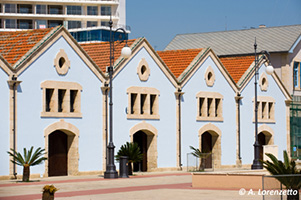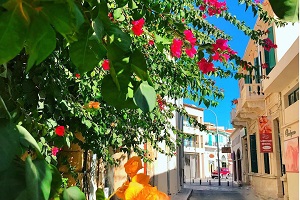About Nicosia
Nicosia is the capital of Cyprus; a status it has enjoyed for 1000 years since the 10th century, though its beginnings date back 5000 years to the Bronze Age. It lies roughly in the centre of the island in the Mesaoria Plain, flanked by the beautiful northern range of Kyrenia Mountains with its distinctive ‘Pentadaktylos’ – the five finger mountain. There are various suggestions as to the origin of the name Nicosia – or ‘Lefkosia’ In Greek – but the most likely one is linked to the popular tree, the tall ‘Lefki ‘ which once adorned the city.
Based in Nicosia are the Government head offices, Diplomatic headquarters and the cultural centre of Cyprus. The capital presents two distinct faces: the old, original part of the city, surrounded by sturdy Venetian walls over 400 years old, and a busy modern metropolis which has a population of 171.000 together with the suburbs.
Within the large area, encircled by the strong bastion walls that served to protect the town for centuries, are many places of great historic interest.
The central Eleftheria Square links old Nicosia with the elegant modern city that has flourished outside the walls, where hotels, offices restaurants and gardens blend happily with the fine old houses and colonial buildings of this cosmopolitan city.
Nicosia is a sophisticated and cosmopolitan city, rich in history and culture that combines its historic past with the amenities of a modern city. Nicosia has established itself as the island’s financial capital and its main international business centre. The ‘new’ Nicosia developed outside the walls became a contemporary, business and cultural center. Just a few miles away are enchanting places of interest such as Byzantine churches and monasteries, archaeological sites and charming villages. The uniqueness of such a combination makes the capital of Cyprus a place worth knowing and certainly a place worth visiting!




About Larnaca
Larnaca is an area of outstanding natural beauty, endowed with numerous attractions, waterfronts and scenic vistas, complemented by some of the island’s most outstanding beaches.
The city of Larnaca is located on the southern coast of Cyprus, with a population of approximately 85,000 and is the third largest city, after the capital Nicosia and Limassol. It is home to the island’s largest airport, Larnaca International Airport, which is located on the outskirts of the city to the south with excellent road links to the whole of the island. Larnaca also has the island’s second largest commercial port and a marina, which are two of the four official entry points by sea into Cyprus.
Larnaca Salt Lake is a distinctive and picturesque landmark, consisting of a network of four salt lakes of different sizes, with an overall surface area of 2.2km, located just off the road leading to the airport. It is considered one of the most important wetlands of Cyprus and has been declared a special protected area and is a prominent domain for wild birds. The lake is home to 85 species of water birds and is a primary migratory passage through Cyprus. It is visited by flocks of pink flamingos that reside there from November until the end of March, a breath-taking sight to see.
The city also has a number of other landmarks, which include the Church of Saint Lazarus; the Catacomb of Phaneromeni Church; Hala Sultan Tekke; Kamares Aqueduct and the Fort of Larnaca. Additionally, Larnaca has a Municipal Theatre and an Art Gallery.
The beautiful seafront promenade, the “Phinikoudes”, is not only lined with palm trees, but also an array of popular seafood restaurants, bars and cafés predominantly visited by tourists.




